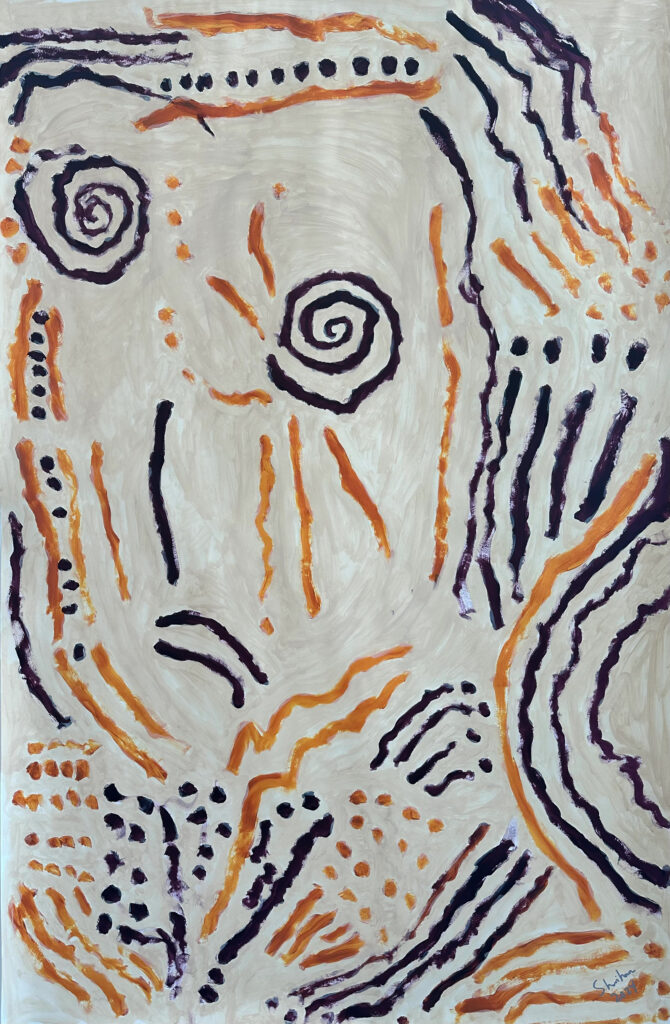NEW YORK WE LOVE YOU (2020) is a very personal work which explores Khalil’s experience of disconnect and longing in New York during the COVID-19 pandemic. The photograph presents the city which “never sleeps” as quiet and empty.

At the centre of the composition, Webster Hall’s marquee holds the words: “NEW YORK, WE LOVE YOU”. The message used as the photograph’s title is ironically surrounded by empty streets, making it seem as though the city has been abandoned. Surrounding the words is graffiti on the walls, fractured pavements and a general grittiness to the road. These elements contrast with the city’s gentrification, which continues to make New York City more and more commercialized and perhaps is driving out some of the personality along with it in this process.
Thus, the photograph reflects Khalil’s disconnect from the current form of the area as it has changed and become gentrified, yet some elements of its past are still lingering. The two parts of the photograph’s composition, in which the graffiti wall is opposite to the more modern architecture, contrast the two through change. Yet despite this gentrification; these elements of the past community identity remain and will linger on. Though some of its personality will become muted – the character the area has grown through its history survive; even if they are in smaller forms.
The choice of black and white in the composition creates a slightly nostalgic feel- while connecting to Khalil’s longing for what it was in the 1980s. Removing the colours turns the photograph into a memory snapshot which is being invaded by gentrification. Yet, the silence allows for contemplation and to remember the old New York City. The original identity may not be there fully. However, there are still pockets of it, and despite the gentrification, New York continues to be a diverse and chaotic place, which perhaps- may create new identities within the city in the future.

Citizens (2023) highlights the complexity of the modern concept of citizenship in an extremely globalized (which perhaps is getting more connected as time goes on) and technologically entangled world. Khalil has cited Herbert Marcuse’s critique of the industrial state as an inspiration for this work. Which Marcuse asserts, in the short term, that modern society engineers conformity and suppresses individuality.
The oil painting has what seems to be an abstract form of human beings pushed into each other and condensed. The dark purple background pushes these out of the canvas like they’re overflowing and cannot be contained within the painting. It is as though these figures are forming a hivemind, and the figures that climb above the others enforce an order upon the ones below despite some looking as though they are attempting to leave the canvas. This represents the feeling of individuality yet being restricted and falling into the order of the society that is enforced by the modern nation-state.
Another interpretation could be that the movement of the figures trying to go above the others also could be seen as an attempt to move up in this society, which allows for their life to get better yet ironically only strengthens the system. The movement seems guided so that it seems it is intentional for these citizens to attempt to get better in the system- yet to do so, they must collectivize themselves into society and devoid them of their individuality.
The artwork thus could be showcasing that citizenship is ironic as it limits and liberates the self as they can move through the class system (which is the liberation) yet must conform to do so (which is the hivemind).

Epochgraphy III (2024) is inspired by petroglyphs and cave art. It represents the contrast between the past and the present narrative of art history within the context of prehistoric art. As part of Khalil’s Epochgraphy series, it was inspired by a visit to the Shanidar Caves in Iraq.
The work flows freely and features spirals and dots in both orange and black. Although acrylic, these colours could be referencing the colours that early human paints used: iron oxide for oranges and charcoal for the black pigments. It seems the paper has been painted over with white paint and then painted over with the colour. The paper’s texture, as a result, slightly resembles or mirrors the surfaces of the cave walls.
Through this work, Khalil is critiquing how cave art and ancient art, in general, have been marginalized within the canon of art history (in particular, in the regions of East Asia and Africa). The channelling of energy to create the work brings the question of why it is marginalized and not included to the forefront. It challenges the Western-centric academic art history canon and, thus, correctly implores that cave art is a form of art that is important within art history, especially so as it is the foundation and the first marker of human creativity.
